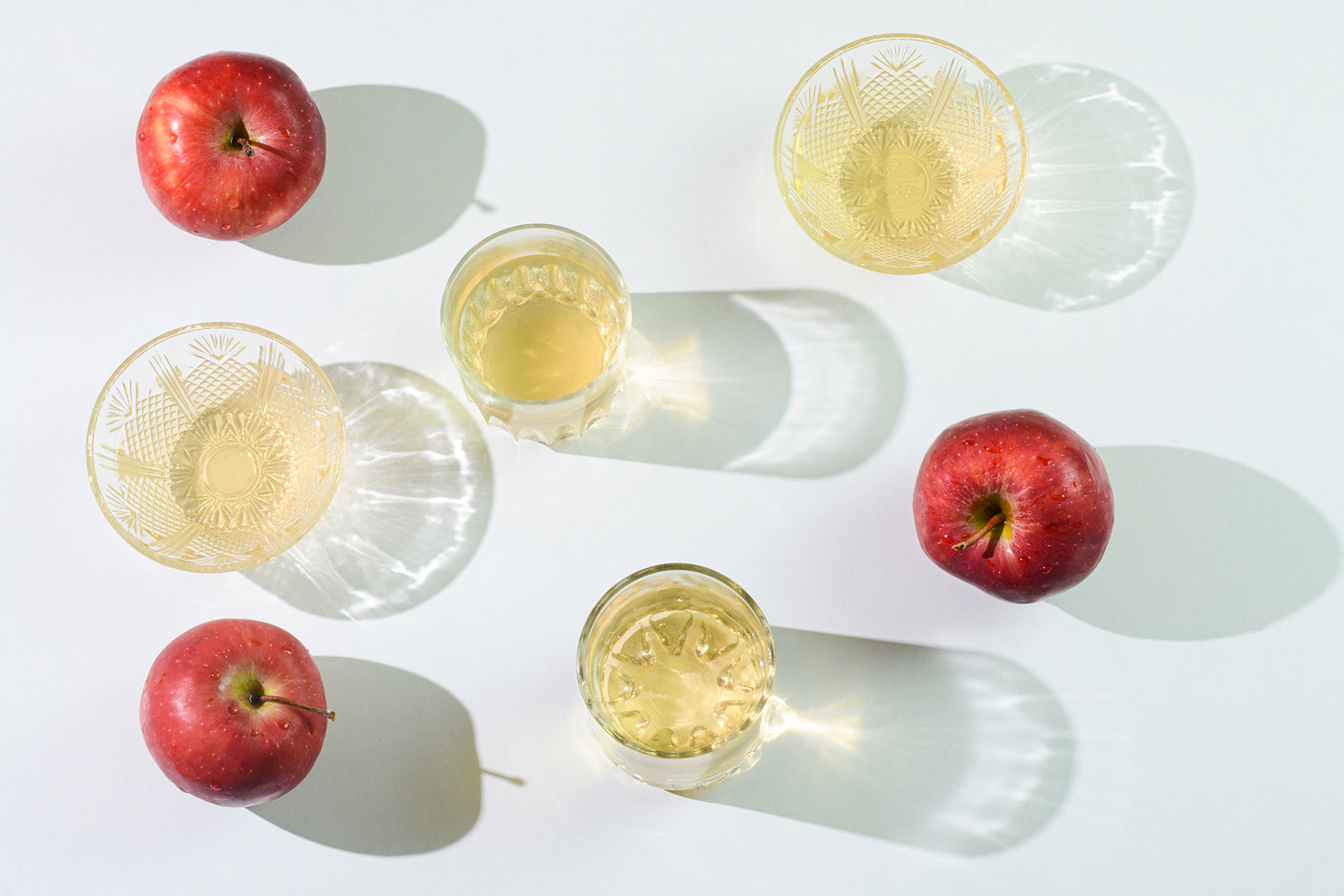Long into my adulthood, Thanksgiving meant a holiday defined by brand names. A Butterball turkey. Ocean Spray cranberry sauce, coaxed out of the can with its ringed indentations intact. A pie made from Libby's pumpkin puree. And always, always, plenty of Martinelli's sparkling cider.
I grew up in a teetotaling family and then married in to one (both, uncoincidentally, abutted on all sides with plenty of alcoholism), so Martinelli's has long been the drink of choice at holiday gatherings. Even now, as an adult who will absolutely supplement any family gathering with a nice pinot, I still don't feel prepared for seasonal get-togethers without a few bottles of Martinelli's chilling in the fridge. Then I spend a good part of the rest of the year forgetting how damn good the stuff is — no sugar, no water, essentially just apples and bubbles with a little vitamin C thrown in to keep the color fresh. But I only recently learned that the libation I most closely associate with non-alcoholic festivity began its life in a much tipsier incarnation.
"The first third of the company's existence was as an alcoholic product," explains Gun Ruder, President and Chief Executive Officer of Martinelli's, "because pasteurization had not been applied to juices broadly. From [Stephen Martinelli's founding the company in] 1868 through the onset of Prohibition, we were hard cider, apple wines, sparkling apple wines. And that," he says, "was it." The California company chugged along successfully for decades with its fermented products, but a well-timed innovation changed its trajectory forever.
"The first third of the company's existence was as an alcoholic product."
While second-generation Martinelli, Stephen G. Martinelli, Jr. was a student at Berkeley in the early 20th century, he crossed paths with a professor who'd been experimenting with new techniques for pasteurization. "They applied it to apple juice, and wow, now you can make a shelf-stable product," says Ruder. And as the temperance movement began picking up steam and local counties started going dry, Martinelli's had their alternative locked and loaded when the 18th Amendment passed.
"During Prohibition, the company pivoted to non-alcoholic business," says Ruder. After it ended in 1933, the company went right back to making hard ciders, but kept the popular nonalcoholic branch of the business going as well. By 1977, Martinelli's had moved entirely to non-alcoholic cider production. As Ruder explains, "To make hard cider, it takes a very large footprint and about ten days of process. It was very space intensive, and the site at the time was relatively small. So they had to make the hard choice of exiting hard cider to support the non-alcoholic business." (In 2018, Martinelli's did release a limited edition hard cider to celebrate the company's 150th birthday.)
We need your help to stay independent
For many of us, that sparkling cider in its champagne bottle-like packaging evokes memories of sitting at the kid's table or partying with our more religious friends and family members. There's a wholesomeness associated with a bottle of Martinelli's. But with a rise in sober curious culture, a bubbly without the buzz has a broader, cooler appeal. A recent Gallup poll found that American adults aged 18 – 34 drink alcohol less frequently and less excessively than their older peers. Among my own generation, even a single cocktail hits harder these days, and it's nice to feel like you can keep the party mood going without switching over to water.
Though Ruder says the company's sparkling cider drinkers are still "primarily children who aren't of drinking age" followed by "folks that are choosing to have an alternative to alcohol at an event" — they've begun to see a "huge upswing" among folks in their 20s and 30s. "It's an important part of our consumer base," Ruder says, adding, "The benefit we have is that those consumers many of them grew up drinking our product anyway." Mixing familiarity with a more contemporary vibe, the company rolled out a blush version of their sparkling cider in 2019. And those who want a more Instagrammable experience might opt for its Heritage Label version, with its evocative, old school typography.
Image and perception, after all, are everything — down to the names we call our seasonal beverages. As the company explains on its site, "Martinelli’s apple juice and cider are the same; the only difference is the label." Ruder confirms, "There is no difference. At different times of year, with the exact same product, if you put them side by side, everybody will buy the cider. There's a concept there that makes cider more popular."
And while Martinelli's has a solid, all-year-long thing going on with its juice, the company hopes its fans can expand our appreciation of the fizzy stuff beyond the holidays. "We do resonate with tradition and family and celebration," says Ruder. "We have a core resonance this time of year, with that iconic champagne bottle on the table. He adds, "We think there's opportunity in occasions where people who love our product don't think about us in the same way as they do it from Thanksgiving through New Year's. Everybody thinks about buying a bottle of Martinelli's Thanksgiving through New Year's, because they always have." But why not also raise a glass when "going on a picnic or celebrating a birthday or just made it through to the end of a long day of work?
"We believe that there's a place for celebration and indulgence every day throughout the year," says Ruder. And while that sounds more like a great New Year's resolution than a Thanksgiving intention, this effervescent season of joy, I'll drink to that.

